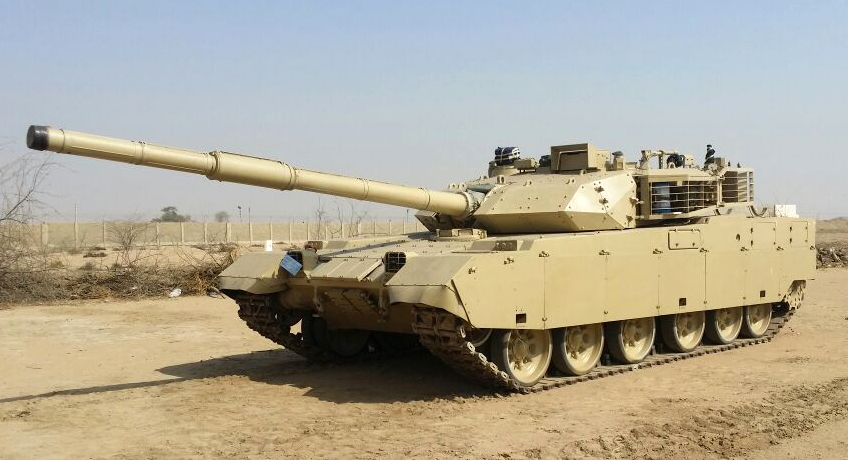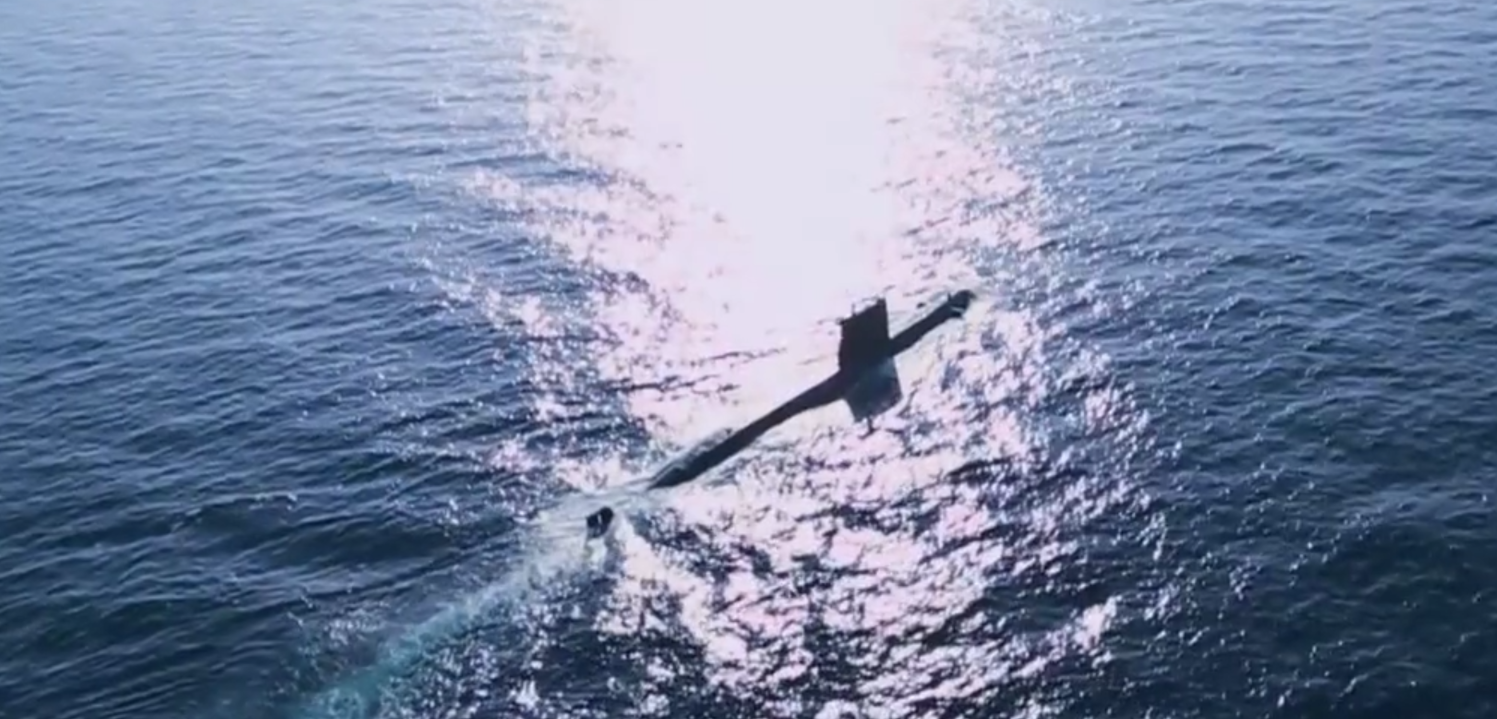2551Views 3Comments

Haider: Understanding Pakistan’s next-generation tank
In 2015, the Pakistan Army evaluated a number of next-generation main battle tanks (MBT), including the Chinese NORINCO VT-4. The program is under the designation “Haider,” a new MBT positioned to support the al-Khalid series of MBTs in the Army’s tank formations.
On the surface, it may seem curious why the Pakistan Army is searching for a new tank, especially when it already has the al-Khalid. After all, the al-Khalid was to form the mainstay of the Army’s tank inventory, and there is nothing to stop the design from incorporating new subsystems (such as self-protection suites) should they become available. What is the need for the Haider?
If the VT-4 (and another potential contestant, the Ukrainian Oplot-M) is to be considered, then it seems that the Haider program is leaning on the heavier side. In other words, the Pakistan Army is beginning to shift from its preference for highly mobile – but lightweight – MBTs in favour of heavier and up-armoured designs. The al-Khalid sits in the 45-ton area, the VT-4 and Oplot-M weigh a little over 50 tons. If powered by 1500hp engines, these designs could potentially take on even more weight should Pakistan require it.
Pakistan was reportedly even interested in the Turkish Otokar Altay MBT, a heavyweight of 65 tons. While not currently available for export (as Turkey needs to secure an exportable powerplant), the Army’s look at the Altay may indicate an interest in heavier and qualitatively driven MBTs. Weight, power and armour aside, the Altay is flush with cutting-edge subsystems, most notably the Akkor active self-protection suite produced by the Turkish electronics giant Aselsan.
To quantify what an active protection suite such as the Akkor would offer, it would be a good idea to start with how tanks are currently protected. There is the armour, but if facing a high velocity guided anti-tank missile (ATGM), one would prefer having that missile scuttled before it reaches the tank. This is done by trying to bury the ATGM’s guidance method, such as laser (through the use of a smokescreen). A passive protection suite basically tries to drive the incoming missile to miss; the Akkor active protection suite on the other hand will try to intercept the missile itself! Why is this important? Laser is not the only method of guiding modern (and especially future) ATGMs; millimeter wave (mmW) and imaging infrared (IIR) threaten to greatly neutralize current passive protection measures.
Now, combine that active protection suite with improved armour and up-powered powerplant in the tank. The result is a balanced and agile machine capable of withstanding punishment; add the ability to launch guided missiles and shells, said tank will also be capable of inflicting damage as well. Relative to the al-Khalid as it is today (we will get to its future development in a later article), the Haider would basically be the superior tank in every respect. As a platform, it gives Pakistan an opportunity to have a “smart tank” akin to the South Korean K2 Black Panther (developed by Hyundai Rotem).
By “smart tank” we refer to the idea of pairing a tank’s inherent firepower and defensive qualities within a network-centric warfare environment. Imagine a scenario where the Pakistan Army acquires an air-to-ground tactical data-link system that enables the Haider to build its situational awareness based on sensor data taken from a GMTI-SAR. The GMTI-SAR would enable the Haider to see a real-time picture of the battlefield with an understanding of enemy movements. The tank crew can proactively adjust their movements vis-à-vis the enemy, and do it in very close concert with their close air support (CAS) cover. In this scenario, a true JSTARS-like system would be a major asset.
Together, this formation would be a credible offensive asset and a means to add substantive depth to the Army’s conventional deterrence. Pakistan will not benefit from air superiority in a future war, but a sufficient number of (air covered) resilient machines on the ground networked to sensors that can acquire the complete battlefield picture could help Pakistan contest in tough situations.
In tandem, the comparatively lower-cost al-Khalid-series can be bought to continue phasing out the T-59 MBTs – in time, become the backbone. The Haider can serve as the offensive asset, and the al-Khalid can sit as a defensive or holding corps workhorse. Certain aspects of the Haider, such as the up-rated engine, newer armour technology, guided attack capabilities, and active protection suite could also be brought to the al-Khalid over the long-term. Of course, cost and added gains need to be balanced, there is no point in having an al-Khalid variant that ends up being as expensive as the Haider.
Besides the operational gains of the Haider, there is an industrial and self-reliance opportunity as well. The Army seems to have identified a new need, but it does not necessarily need to open a parallel support line – at least not entirely. Subsystems such as the powerplant, electronics, cannon, munitions, armour technology, and protection suite could be made common across the Army’s tank stable. These systems can be scaled across thousands of vehicles in the long-term, and in turn, should warrant domestic support. Local production and continued in-house support and development is a must.
The aforementioned technology can also be applied to wheeled vehicles as well, such as the 8×8 armoured personnel carrier (APC) the Army has been seeking for some time. In parallel with its tracked armour, the Army could even build up a mobility-centric offensive element as well.



3 Comments
by Hashim Rasheed
With the requirement for a new tank, it is no surprise that Pakistan has first looked at China and Ukraine. However, looking at the world market and available options, I am of the opinion (totally my opinion, people can disagree) that Pakistan should also be looking at the French AMX Leclerc and the German Leopard 2A6. These are two of the leading tanks in the world at the moment with a wide array of operational capabilities, defense mechanisms, and firepower. They will not just be an upgrade to the very capable Al-Khalid, but a major step forward in terms of technology and offensive ability.
by Abdul Rashid
Thanks for this article, Bilal.
I had for a long time ants running riot in my pants waiting for just such an explanation of what’s what in PA tank acquisition plans and possible future set up. This has appeased the ants somewhat but they are still restless over JF17 III details but I understand you have covered that as far as reasonably can be done at this stage.
by U
As far as I can remember Al Khalid is also kind of a “smart tank”, as a couple of years ago I saw the Army stating on TV that they have integrated Al Khalid with systems through which it can get live video feed from a drone above the battle field. This probably means the Al Khalid does have a tactical data link system and can be used to take sensor data from various ISR systems in service with the Pakistan Armed Forces,